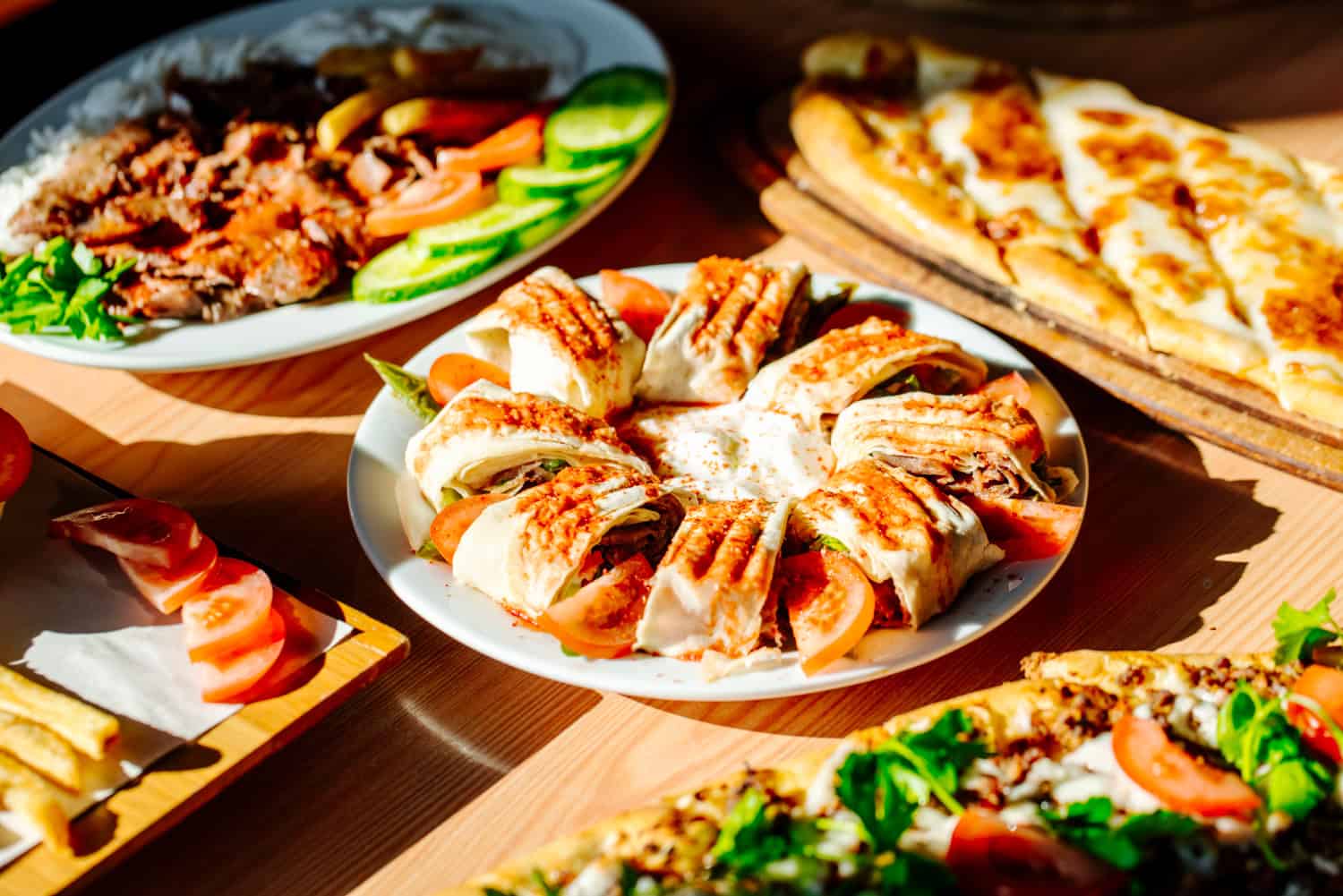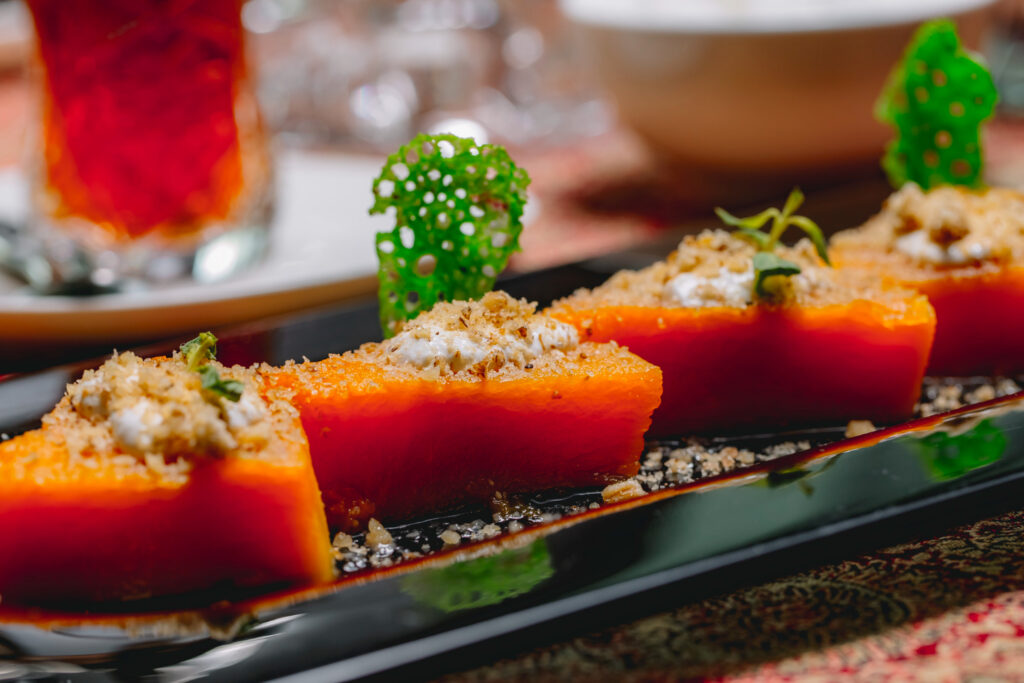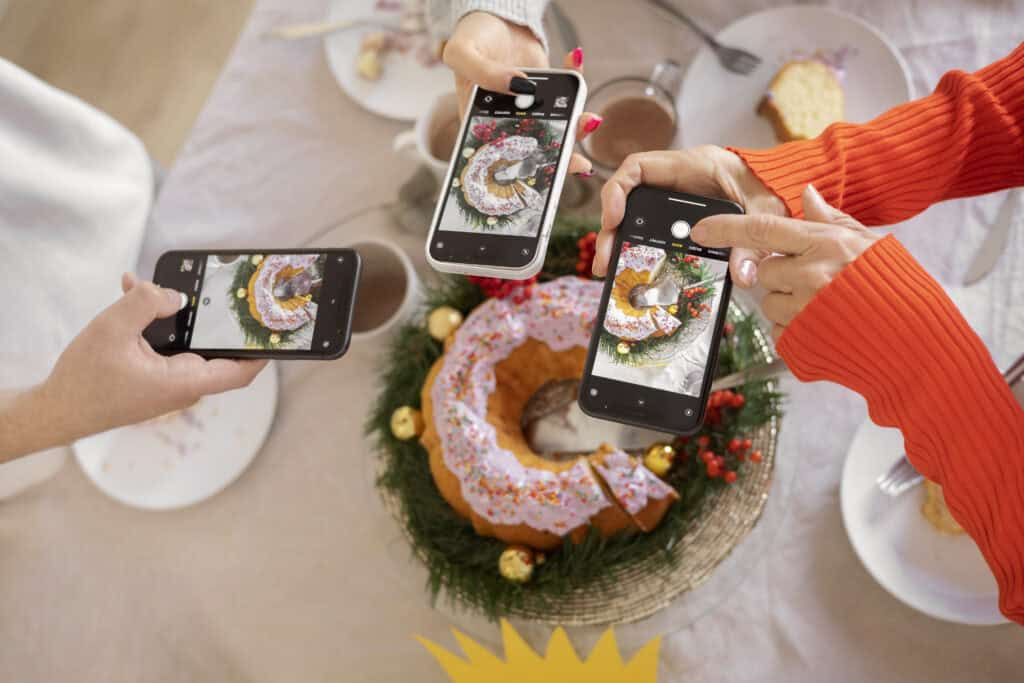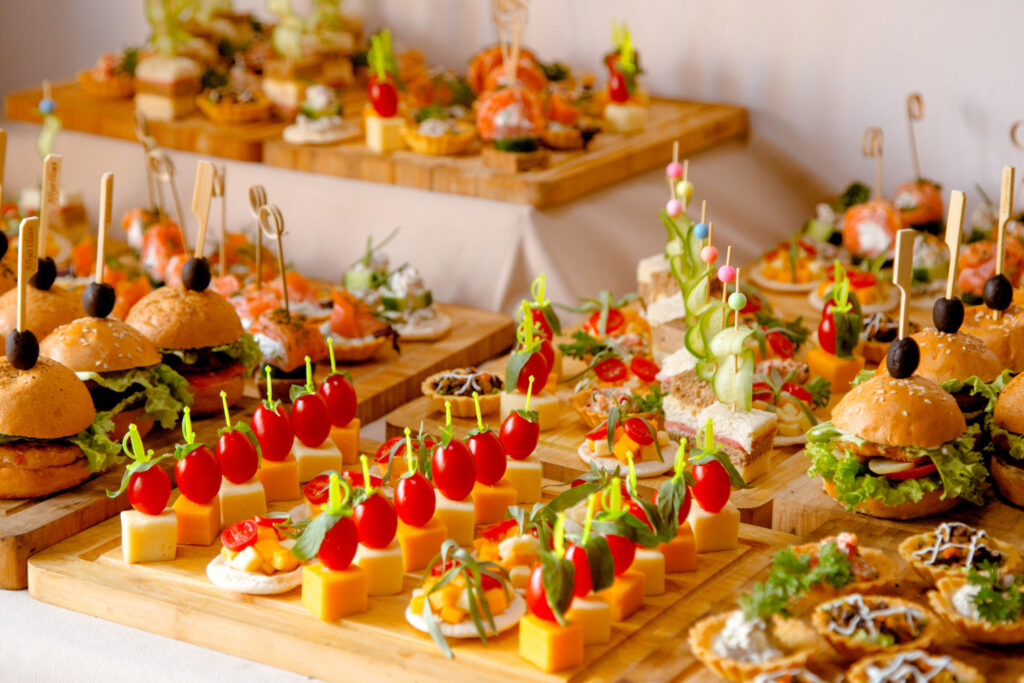
By Jermaine Thomas June 20, 2025
Let’s face it, the way we think about food has changed. It’s not just about how it tastes or smells anymore. These days, it’s also about how good it looks on camera. Social media has made food presentation almost as important as flavor. A well-plated dish? That’s not just for the chef’s satisfaction now, it’s marketing gold. It could end up trending, getting shared thousands of times, maybe even making a name for a restaurant. So it’s no surprise that everyone from professionals to home cooks is rethinking how their food hits the plate.
Platforms like Instagram, TikTok, and Pinterest have basically become digital food galleries. A lot of people won’t even take a bite before snapping a quick photo. It’s part of the ritual now. And whether it’s a stack of ridiculously colorful pancakes or a plate of perfectly minimal sushi, if it looks good, people will notice. These picture-perfect meals are drawing in crowds, building brands, and even changing what’s “in” when it comes to food .
The Rise of Instagram-Worthy Food
Social media has given everyday people the ability to broadcast their meals to large audiences. This trend of showcasing visually striking dishes has led to a demand for Instagram-worthy food in nearly every dining setting. The term refers to food that is not only delicious but also arranged and styled to look stunning in photos. The rise of visual-first platforms has redefined how people judge a dish. Food Presentation now plays a central role in whether a meal is shared, liked, or even ordered in the first place. Diners often scroll through tagged posts or location feeds to decide where to eat, relying heavily on visual cues rather than written reviews.
This has created a new layer of competition. It’s no longer enough for a dish to taste great. It has to look great, too. Restaurants have responded by hiring food stylists, redesigning plating methods, and even investing in better lighting for social media exposure. In this new landscape, food is no longer just about nourishment or indulgence. It’s about storytelling, aesthetics, and creating a visual identity that can be captured and shared within seconds.

How Chefs Are Adapting to Social Media Trends
Professional kitchens are fast-paced, high-pressure environments, but even in this setting, chefs are learning to adapt to the demands of catering for social media. This doesn’t mean sacrificing taste or authenticity. Instead, it involves being strategic about how a dish is assembled, garnished, and served. Chefs are paying closer attention to color contrast, plating symmetry, and height. Bright ingredients like edible flowers, microgreens, and colored sauces are used more deliberately to add visual interest. Plates are often kept minimal, allowing the focal point of the dish to shine without clutter.
There are chefs out there who are really leaning into how their food looks on camera. Some will go as far as building their dishes mainly for the visual impact. You might see drinks served in odd-shaped glasses or desserts that seem like they’re floating mid-air. Sometimes, entire menus are built around how they’ll photograph. It’s not just about flavor anymore, it’s about what grabs attention in a photo. But even with all that visual focus, there’s a catch.
Food still has to make sense in real life. It can’t just be flashy; it needs to be doable in a kitchen and still taste great. That’s where the challenge comes in. The best dishes, the ones that blow up online and still make people happy at the table, they get both parts right. They’re good-looking, sure, but they’re also just plain good.
The Influence of Diners as Content Creators
One of the biggest shifts in food presentation has come from the diners themselves. With smartphones in hand, customers have become unofficial brand ambassadors. Their posts serve as word-of-mouth marketing, and their photos can shape public perception more than a professional ad campaign. This shift has placed new expectations on restaurants and cafés. Businesses now consider how a dish will look not just under their lighting but under a smartphone’s flash or a filter. Even elements like table settings, wall decor, and background textures are chosen with social sharing in mind.
Some restaurants even create “photo spots” or dedicate certain tables near natural light sources for better images. Others offer branded props, signature cocktails, or unique plating elements that encourage guests to post their meals. This rise in diner-driven content has made photogenic meals a valuable asset. A single viral photo can lead to a surge in reservations or online orders. As a result, food presentation has become a key part of the customer experience, not just for the person eating the meal, but for their entire digital audience.
The Role of Color, Texture, and Composition
In traditional culinary education, food presentation follows principles that highlight taste, balance, and tradition. But in the social media era, visual elements take on additional importance. Creating Instagram-worthy food now involves a deep understanding of color psychology, texture contrast, and camera-friendly composition. Bright colors tend to perform well on social platforms. Dishes that feature vibrant vegetables, bold sauces, and fresh herbs naturally draw attention. Chefs are more likely to use ingredients like beets, turmeric, or butterfly pea flower not just for flavor but for visual impact.
There’s something about texture that really pulls people into a food photo. That golden crunch on top, a shiny drizzle of sauce, or even a bit of foam, it all adds to the story the picture tells. You almost feel like you can taste it just by looking. That’s the kind of reaction good food photography can spark.
But it’s not just texture. The way a dish is put together matters, too. These days, chefs and cooks think about the camera just as much as the person eating. Maybe they stack things to give the plate some height, or place ingredients at an angle instead of straight on. Sometimes, they leave parts of the plate empty, not by accident, but to guide the eye. Even the plate itself, whether it’s plain white or rustic and handmade, plays into the overall look. Put it all together, and suddenly the meal isn’t just food anymore, it’s something people want to snap, share, and remember.
Social Media and the Evolution of Catering

Catering businesses have also adapted to the demand for catering for social media. Whether it’s a corporate event, wedding, or pop-up dinner, clients expect not only delicious food but also a visual spectacle. This includes everything from grazing tables and dessert walls to intricately designed finger foods. Presentation is no longer an afterthought. Caterers now think in terms of presentation zones, interactive food stations, and stylized trays. Food must be easy to photograph, hold its shape over time, and remain visually appealing even after being served in bulk.
Some caterers go a step further by offering branding elements in their displays. Custom logos, color schemes, or coordinated backdrops help reinforce event themes and encourage attendees to share photos. These touches make the catering itself a key part of the event experience. As guests increasingly share their experiences in real time, caterers who prioritize photogenic meals gain exposure that traditional marketing methods can’t replicate. Social media posts from an event can reach hundreds or thousands of people, creating brand visibility long after the food has been eaten.
Challenges in Plating for the Camera
While the push for visual appeal has its benefits, it also presents several challenges. The first is the risk of prioritizing form over function. In the race to serve Instagram-worthy food, some businesses lose sight of flavor, portion size, or ease of eating. This can lead to disappointed customers and negative reviews. There is also a concern around authenticity. Some critics argue that the pressure to look good on social media can lead to gimmicky presentations that lack substance. When plating becomes more about appearance than experience, the soul of a dish may be compromised.
Consistency is another problem. It can be challenging to replicate precise plating of photogenic food during busy service times. This puts strain on the kitchen crew and may result in inconsistent customer service. Lastly, not every dish lends itself to being photographed. Even though comfort food, stews, and brown-colored dishes are delicious, they can be challenging to present. Chefs must be creative in order to accomplish this without compromising the recipe’s integrity. Balance is necessary to overcome these obstacles. Enhancing, not replacing, the dining experience through visuals should always be the aim.
How Home Cooks and Food Influencers Are Changing the Game
The influence of social media is not limited to professional kitchens. Home cooks and influencers have played a huge role in shaping what photogenic meals look like today. With affordable tools like ring lights, editing apps, and DSLR cameras, amateurs now produce food content that rivals professional standards. Food bloggers and content creators are setting trends in plating, introducing new styles, and influencing what people expect from restaurants. Viral recipes and visual hacks, like stacking pancakes with skewers or using tweezers for garnish, are now common practices across platforms.
As these creators experiment, they push the boundaries of what is possible and raise the bar for presentation. In doing so, they also influence what customers bring to the table in terms of expectations. A dish that looks basic may feel underwhelming, even if it’s perfectly prepared. This cultural shift means that both professionals and casual cooks are part of a larger conversation about how food should look. The feedback loop between creators and audiences drives innovation while also reinforcing the value of visual storytelling in food.
Marketing and the Visual Language of Food
Plating for the camera has also become a marketing tool. In an age where attention is limited and competition is fierce, images often speak louder than words. A well-styled plate can communicate quality, creativity, and care in ways that no caption can fully express. Restaurants and food brands use this to their advantage by designing dishes that photograph well and encouraging customers to share them. Hashtags, location tags, and branded backdrops turn diners into content creators, expanding the business’s reach organically.
This strategy extends beyond restaurants. Meal delivery services, packaged food companies, and even grocery brands now consider how their products appear in user-generated content. They understand that visually appealing meals increase both engagement and conversion rates. For small businesses, this approach is especially powerful. A single customer post can draw dozens of new diners, making the investment in catering for social media well worth the effort. The right image at the right time can do more than a paid ad ever could.

Finding the Balance Between Art and Authenticity
The secret to long-term success, as with any trend, is balance. The fundamentals of food have not changed, despite the fact that social media has increased the bar for presentation. It ought to uplift, soothe, and unite people. Meals that blend authenticity and artistry are the most memorable. Making every dish into a performance is not the same as plating for the camera. It involves recognising the power of images and utilising them to complement the main experience rather than overpower it. A dish can be enhanced without distracting from its core with a well-chosen garnish, a tidy plate, or a vibrant accent.
Restaurants and caterers must continue to innovate while staying grounded in their culinary identity. The best social media strategies are those that celebrate what makes a brand unique rather than chasing trends for short-term attention.
Conclusion
Social media has changed the way food is seen, shared, and judged. From the rise of Instagram-worthy food to the evolving expectations around photogenic meals, presentation has become an integral part of the dining experience. Whether you’re a chef in a fine dining restaurant or a caterer managing events, catering for social media is now part of the job. But with this shift comes opportunity. Visual appeal, when combined with quality and intention, can turn meals into moments, customers into advocates, and dishes into icons. By understanding the new standards and embracing them with creativity and care, food professionals can thrive in a world where every plate has the potential to go viral.